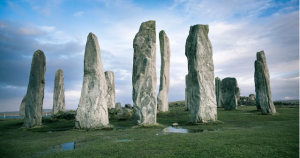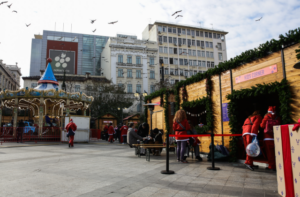New evidence of a massive lightning strike at the center of a hidden stone circle in the Outer Hebrides may help shed light on why these monuments were created thousands of years ago.
The Calanais Virtual Reconstruction Project, a joint venture led by the University of St Andrews with the Urras nan Tursachan and the University of Bradford, with funding from Highlands and Islands Enterprise, has uncovered a potential link between ancient stone circles and the forces of nature.
While studying prehistoric Tursachan Chalanais, the main stone circle at Calanais on the Isle of Lewis, the project team surveyed nearby satellite sites to reveal evidence for lost circles buried beneath the peat.
One rarely-visited site surveyed, known as Site XI or Airigh na Beinne Bige, now consists of a single standing stone on an exposed hillside overlooking the great circle.
Geophysics revealed that not only was the stone originally part of a circle of standing stones, but also that there was a massive, star-shaped magnetic anomaly in the center—either the result of a single, large lighting strike or many smaller strikes on the same spot.
Project leader Dr. Richard Bates, of the School of Earth and Environmental Sciences at the University of St Andrews, said: “Such clear evidence for lightning strikes is extremely rare in the UK and the association with this stone circle is unlikely to be coincidental. Whether the lightning at Site XI focused on a tree or rock which is no longer there, or the monument itself attracted strikes, is uncertain. However, this remarkable evidence suggests that the forces of nature could have been intimately linked with everyday life and beliefs of the early farming communities on the island.”
Read more: archaeology news network
Ask me anything
Explore related questions





